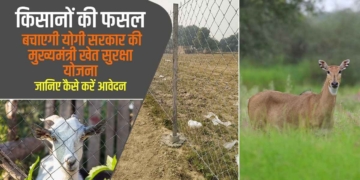[ad_1]
Soybean is an important Kharif crop in India, ranking as the fourth largest producer globally. The highest soybean production in India is in the Malwa region of Madhya Pradesh. Commercially, soybeans are primarily used for oil extraction. Soybean cultivation is widespread across almost all states in India, with Madhya Pradesh, Maharashtra, and Rajasthan alone accounting for 90% of the country’s total production. Farmers achieve significant profits from soybean cultivation.
Climate and Soil Requirements for Soybean:
Soybean should be sown between the last week of June and the first week of July when there is 4-5 inches of rainfall. Fertilizers should be applied based on soil testing results. The best soil for soybean cultivation is clay loam. Use organic manure like cow dung or vermicompost. For balanced chemical fertilizer management, use a ratio of 20:60–80:40:20 of nitrogen, phosphorus, potash, and sulfur. Apply these fertilizers before the final plowing and mix them into the soil. For less spreading varieties like JS 93-05 and JS 95-60, maintain a row-to-row distance of 40 cm. For more spreading varieties like JS 335, NRC 7, and JS 97-52, maintain a distance of 45 cm.
Advanced Soybean Varieties:
JS-335:
Maturity Period: 95-100 days
Yield Capacity: 25-30 quintals/hectare
Seed Characteristics: High disease resistance, 10-13 seeds weigh 100 grams
JS 93-05:
Maturity Period: Approximately 95 days
Yield Capacity: 20-25 quintals/hectare
Seed Characteristics: 13 seeds weigh 100 grams, semi-determinate growth, purple flowers, less shattering pods
NRC-7:
Maturity Period: 90-95 days
Yield Capacity: 20-25 quintals/hectare
Seed Characteristics: Pods do not shatter, resistant to stem fly
JS 95-60:
Maturity Period: 80-85 days
Yield Capacity: 20-25 quintals/hectare
Seed Characteristics: Semi-dwarf variety, height 45-50 cm, purple flowers, pods do not shatter
[ad_2]
Source link





